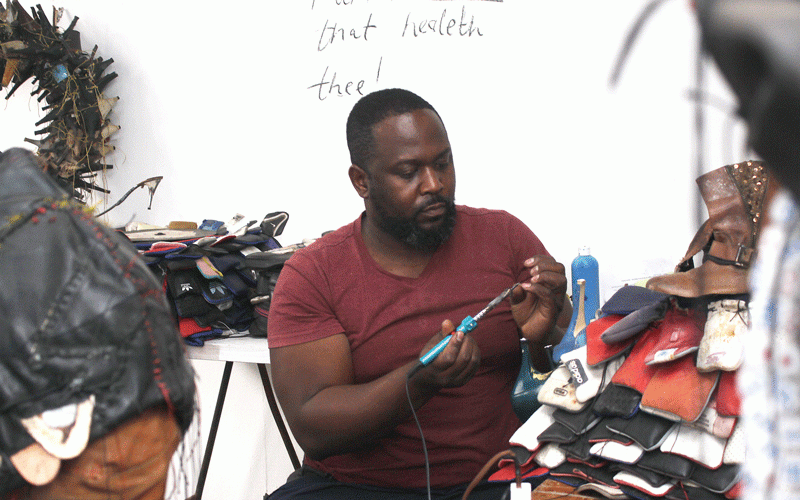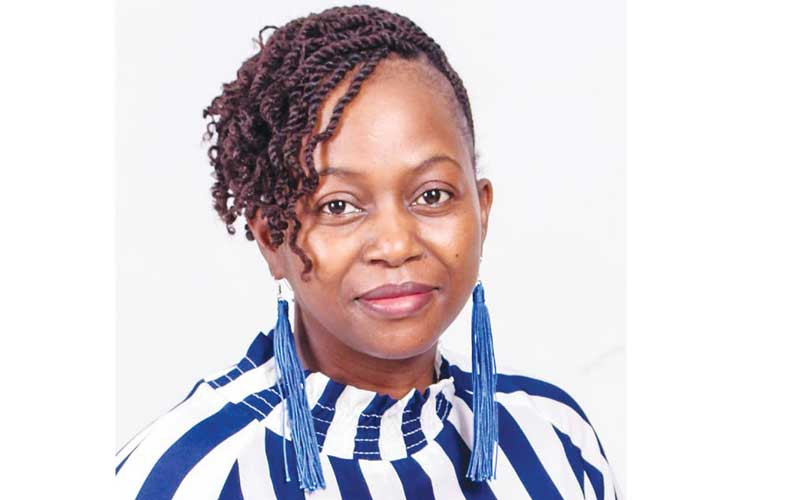
RECENT NAMA award-winning visual artist Tawanda Takura is in residency in South Africa at the Bag Factory Artist Studios, after winning the 13th Cassirer Welz Award, sponsored by Strauss & Co Education and Fine Art Auctioneers.
Catching up with him at the studio provided insight on what it has been like for almost three months.
Takura has found a welcoming community at the Bag Factory, where he says fellow artists have gone an extra mile in assisting him.
“All of them, including the administration, are amazing,” he says.
The Zimbabwean artist starts his day at the studio early in the morning and works until late afternoon.
Fellow artists drop in from time to time.
One of them is a bespectacled elderly gentleman, who the artist introduces as “Ntate Pat”.
Translated from isiZulu, “Ntate” means father, but the term is generally used as a respectful form of address to an older man.
- Takura draws inspiration from material decay
- Takura: Good-humoured artist of note
- Decorated found object creative Takura awarded residency in Mzansi
- Catching up with Takura at Bag Factory Artist Studios, SA
Keep Reading
Walking through the white door marked Cassirer Welz Award, a visitor may find Takura seated almost in the centre.
After midday, sunlight reflecting off the building next door beams into the studio through the skylight above the wall.
Against the wall is a bench with black upholstery that could cater for visitors seating, extra tools, or artwork.
On the other side is a brown chair that has seen better days and looks as if it is set up for one of those seated Jean-Michel Basquiat portraits.
The floor is a minefield to navigate.
Visitors may be gripped by the fear of stepping onto something of value that might look like a piece of “junk”, or knocking over a fragile artwork.
Aside from the finished and half-finished work, there are bits of string, wire, nails and sandpaper over dried paint and glue.
Of course, there are different types and sizes of old shoes which currently form the basis of Takura’s sculptural constructions.
Watching Takura work is like observing a butcher and a surgeon’s processes combined.
First, he takes apart an old shoe with the deftness of a skilled cobbler and surgically sews together retrieved parts into an ensemble that transmogrifies into a larger complex object.
“My subject matter has been a commentary on social structures and religion, to which identity and spirituality are central issues,” he says.
“'Also, coming into this residency I wanted to explore painting which I am doing with a few works.'” he adds, referring to a large canvas mounted on the wall and a smaller one against the opposite wall.
There is an unwritten code of conduct for visitors to the studio.
Etiquette demands that friends and family do not take pictures of the work to share with the public.
If one is inclined to do so, they are gently reminded of the fact.
It is something he has to prevent in order to avoid pre-empting his reveal and stealing the thunder from his upcoming solo exhibition.
When “Ntate”, as Takura simply addresses him, comes through the door, he casts an appraising eye around the studio as if to make sure that everything is okay before popping questions.
The older artist carries a wealth of experience.
Picking a safe spot on the bench, he begins to reminisce about his travels and travails from Belgium to the United States.
Ntate converses about how some residencies are stressful because artists are left alone to fend for themselves and deal with immigration issues in a foreign land.
His statement is reassuring because it implies that Takura is getting better care down south.
This is so because in full disclosure, Ntate is the spritely 71-year-old Kagiso Patrick Mautlo a multimedia artist and co-founder of Bag Factory Artists Studios.
Care about the future of young artists can be felt as Ntate imparts words of wisdom to Takura about the perils of portraying an artist's lifestyle instead of investing real value in one’s works.
It does not sound like a sermon, but just two comrades born generations apart, sharing the same passion for visual art.
Takura says he has to leave the studio before daylight wanes because he prefers to walk to his Airbnb instead of taking a cab.
The walk provides him with an opportunity to collect abandoned objects that he incorporates into his art.
As a found object artist, it appears he has to be in constant interaction with the environment, be hyperaware of his surroundings, and pay attention where others choose to avert their gaze.
The artist’s time in Joburg is not entirely spent locked up in the studio.
Appreciative of the visibility artists enjoy in this city, he takes full advantage of the situation.
“I have been networking with other artists and galleries, learning different points of view and exchanging energies,” he says.
Since the beginning of his residency in July, Takura has made time to hang out, meet new people and just enjoy the social scene.
Clearly having fun, he makes it known that in SA, “they throw some insane parties hahaa!”







